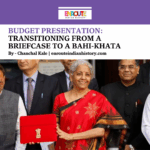What Aihole Inscription tells us about Mahabharata War
- iamanoushkajain
- August 2, 2022
Article Written By EIH Researcher And Writer
Nayanashree Kalita
Inscriptions play an important role in historical reconstruction. Located on the eastern side- wall of the Meguti Jaina temple of Karnataka, the Aihole inscription, also known as the Aihole prashasti, provides a eulogistic account of the early Western Chalukyas, particularly detailing the exploits of Pulekesin II.
Discovered in the latter half of the 19th century, this nineteen line Sanskrit inscription in the Kannada script has been attributed to a certain Ravikirti who compares himself with Kalidasa and Bharavi and is greatly influenced by their works. Although well engraved, the inscription is partly damaged and corrupted – nearly the whole of line 18 and line 19 are later additions. It covers a space of about 4’ 9 ½” by 2’ ½”. First edited with a photo- lithograph by Dr Fleet, the inscription has been recorded, revised, republished and retranslated over time. Although in verses 33 and 34, the inscription explicitly states that it was recorded 3735 years since the Bharata war, there is a contestation regarding its date, whether it was written in Saka 556 and Kali 3735 (the popular view) or Saka 506 and Kali 3030. Clerical errors are few and the work incorporates Sloka, Aupachchhandasika, Arya, Aryagiti, Upajati, Indravajra, Rathodhata, Vasantatilaka, Malini, Harini, Mandakranta, Srdulvikridita, Mattebhavikridita and Sragdhara in its 37 verses.
In describing the strength of the Chalukyas of Badami, Ravikirti compares the family with an ‘immeasurable wide ocean’, saying that it gave birth to ‘men who were like jewels and ornaments adoring the crown of the earth’. Starting with king Jayasimhavallabha, till the reign of Pulakesin Satyasraya (Pulakeshin II) – patron of the prashasti, this genealogical account is mixed with myths as well. Pulakesin II is highly spoken of, and traits which made him the perfect monarch, his physical and military strength, his military expeditions including the defeat of the emperor Harshavardhana are meticulously noted. Pulikesin campaigned both in north and southern India to re-establish in full measure the sovereign imperial authority of the Chalukyas. Historians have been able to reconstruct that the conquests were carried out at four different levels, two of them in the early years of Pulikesin’s reign and the other two nearly fifteen years later. The narrative ends by recording the construction of the Jinendra Temple along with the grant of six villages for its maintenance, and contains the latest known date (A.D. 635-35) for Pulekesi II. This inscription contributes immensely in our understanding of the political and literary history of that time period.
Bibliography
1. Aihole Inscription of Pulakesin II by Dr. T.S. Ravishankar: e-pathshala
2. Aihole Inscription of Pulakesin II; Saka- Samvat 556 by F. Kielhorn: Epigraphia Indica
3. Resolving the Controversies of Astrology and Vedic Astronomy: thinking outside the box by Sri Harsha Indrasena



















